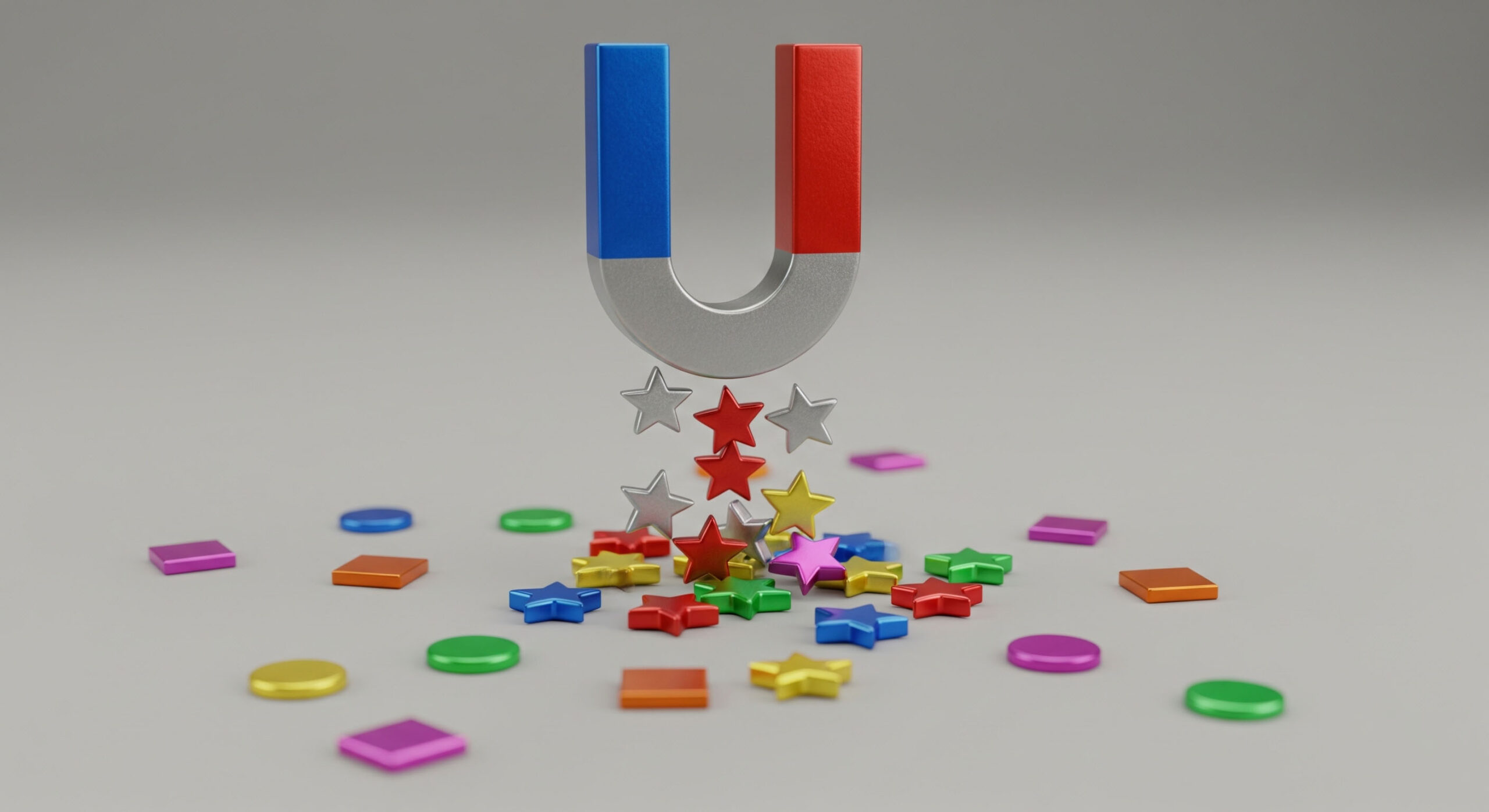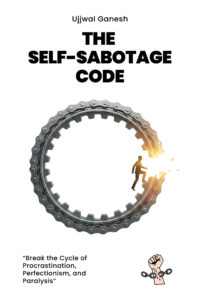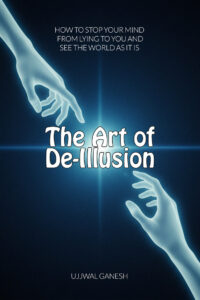Your heart is hammering against your ribs. Your breathing is shallow and quick. A vague, electric hum of dread courses through you. You’re caught in a mental spiral.
Maybe you’re waiting for an important phone call, or you’ve just had a difficult conversation, or perhaps the anxiety has descended for no reason at all. Your mind, hijacked by the Ghost in Your Head, is running wild, painting vivid, catastrophic pictures of the future. You tell yourself to “just calm down” or “stop worrying,” but it’s like trying to reason with a hurricane. The more you fight the thoughts, the stronger they become.
In these moments of high anxiety, you cannot think your way back to calm. When your brain’s fear center, the amygdala, is in control, it temporarily hijacks your rational mind. To escape the spiral, you don’t need a better argument; you need an emergency brake.
You need a tool that doesn’t engage with the story of your anxiety but yanks your attention out of the storm and plants it firmly in the solid ground of the present moment. That tool is the 5-4-3-2-1 Anchor. It is a simple, powerful grounding technique that you can use anywhere, anytime, to regain control in under 60 seconds.
Dropping Anchor in a Mental Storm
The 5-4-3-2-1 Anchor is a grounding technique designed for moments of overwhelming anxiety, panic, or when you feel completely lost in your thoughts. As I explain in my book,
The Observation Effect, “It works by forcing a cognitive shift. It hijacks your attention, pulling it away from the internal chaos of the DMN and focusing it on the concrete, external world.”
Think of your mind as a ship on the ocean. Sometimes the water is calm, but other times a fierce storm hits. The waves of anxious thoughts are huge, and the winds of panic are howling. Trying to fight the storm is useless. The wise captain doesn’t fight the waves; they drop an anchor. The anchor doesn’t stop the storm, but it holds the ship steady and secure on the seabed until the storm passes.
This technique is your mental anchor. It connects you to the only thing that is solid and real when your mind is in chaos: the physical world, experienced through your five senses.
How to Use the 5-4-3-2-1 Anchor: A Step-by-Step Guide
The next time you feel the storm of anxiety brewing, find a comfortable position, either sitting or standing, and walk through these five simple steps. The key is to move slowly and deliberately.
The Prelude: Take One Conscious Breath
Before you begin, take one slow, deep breath. Inhale through your nose for a count of four, hold for a moment, and exhale slowly through your mouth for a count of six. This single breath acts as a signal to your nervous system that you are shifting from a state of panic to a state of control.
5: Acknowledge FIVE Things You Can SEE
Let your eyes wander around your environment. Your task is to find and silently name five distinct objects. Don’t just glance and label them. Truly see them.
- Don’t just see your “desk.” Notice the subtle grain of the wood, a small scratch near the corner, and the way the lamplight reflects off its surface.
- Don’t just see a “plant.” Notice the shape of a single leaf, the different shades of green, and the texture of the soil in the pot.
- Look for small details: a crack in the paint, the spine of a book, a speck of dust floating in a sunbeam.
4: Acknowledge FOUR Things You Can TOUCH
Shift your attention to the physical sensations of touch. The goal is to connect with your body and your immediate environment.
- Feel the rough, woven texture of the jeans on your legs.
- Notice the cool, smooth surface of your phone screen or a glass of water.
- Press your feet firmly into the floor and feel its solidness supporting you.
- Run your hand along your arm and feel the sensation of your own skin or the soft fabric of your sleeve.
3: Acknowledge THREE Things You Can HEAR
Now, close your eyes if it helps, and open your ears. Listen past the loud, obvious noises and try to identify three distinct sounds.
- Listen for the quietest sound in the room. Can you hear the low hum of your computer? The ticking of a clock? The air moving through a vent?
- Listen for sounds outside your room. A distant siren, birds chirping, the rustle of leaves.
- Try to hear the sound of your own body—your steady breathing, your own heartbeat.
2: Acknowledge TWO Things You Can SMELL
This step can be subtle, which forces your brain to focus even more intently.
- Can you smell the faint aroma of the coffee on your desk?
- Perhaps the clean scent of soap on your hands?
- If you’re near a window, try to smell the outside air. Is it fresh? Damp?
If you can’t identify two different smells, simply notice the quality of the air you’re breathing in.
1: Acknowledge ONE Thing You Can TASTE
This final step brings your awareness fully inside your body.
- What is the taste inside your mouth right now?
- It might be the lingering ghost of your last meal or drink. It might be the minty taste of toothpaste.
- It might simply be the neutral, normal taste of your own mouth. Simply notice it without judgment.
After you finish, take one more deep breath and notice the shift. The storm may not have vanished, but you are no longer being tossed around by it. You are anchored.
The Simple Science of Why It Works
This technique feels simple, but it’s leveraging a profound neurological principle. Your conscious mind has a limited amount of bandwidth. It cannot simultaneously process a flood of real-time sensory information and fuel a runaway train of anxious thoughts.
The 5-4-3-2-1 Anchor works by intentionally creating a cognitive load. You are giving your brain’s conscious pilot, the Executive Control Network, a demanding, all-consuming task. As your book,
The Observation Effect, states, this sensory flood leaves “no bandwidth left for the ghost’s anxious stories to thrive.” You are literally using the real world to crowd out the noise in your head.
Furthermore, this practice of grounding helps regulate your autonomic nervous system. The initial deep breath and the focused, calm attention shift your body out of the “fight-or-flight” state and into the “rest-and-digest” state, slowing your heart rate and easing physical tension.
An Anchor in Every Storm
You cannot control when the storms of life will appear, and you cannot always control the chaotic weather in your mind. But you are not helpless.
The 5-4-3-2-1 Anchor is more than just a coping mechanism; it’s a declaration of your own power. It is proof that you always hold a tool to find your way back to the safety and sanity of the present moment. It is your reliable, portable, and fast-acting anchor in any storm.
This is one of the most essential tools in the observer’s toolkit. For a complete guide to forging a more focused, calm, and resilient mind, you can explore the full collection of frameworks and exercises in my book, The Observation Effect.













